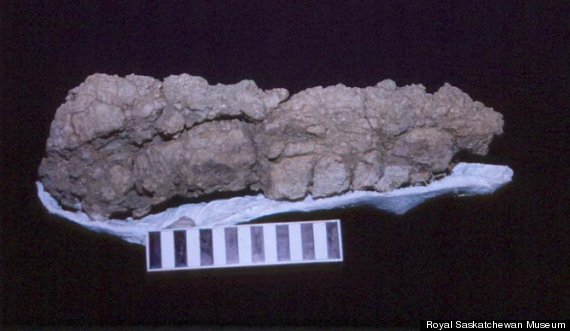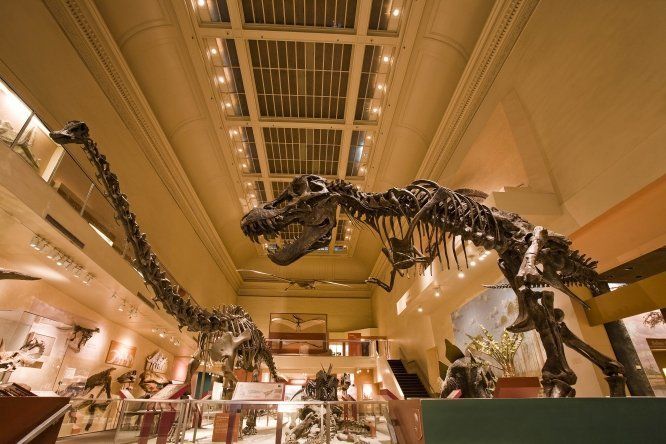
WASHINGTON -- Are you ready to feast your eyes on a 65-million-year-old hunk of poop?
A replica of Tyrannosaurus rex feces is en route to the Smithsonian National Museum of Natural History thanks to a donation from Canada's Royal Saskatchewan Museum. The original specimen, so to speak, will remain at the museum.
"We want to show our visitors that paleontologists do not just work with fossil bones and teeth but can also draw on other lines of evidence such as coprolites and tracks to reconstruct the life and times of ancient backboned animals," Dr. Hans-Dieter Sues, curator of vertebrate paleontology at the National Museum of Natural History, said in a statement.

The fossilized feces will be part of the Natural History Museum's "Putting Dinosaurs In Their Place" exhibit, scheduled to open in September 2014.
This particular specimen is unique because "we can clearly identify it as coming from a meat-eating dinosaur, and the only species of that type of dinosaur living in the area at the end of the Cretaceous Period that was large enough to produce this coprolite was Tyrannosaurus rex,” paleontologist Harold Bryant, director of the Royal Saskatchewan Museum, explained in an official announcement.
Bryant showed off the specimen at a press conference Wednesday:

The feces contains undigested bone fragments of T. rex's prey, suggesting the meal wasn't in the dino's stomach very long.
Analysis of the bone fragments and comparison with those from other dinosaurs known from Saskatchewan at that time suggest the animal consumed was a juvenile, likely a duck-billed dinosaur, or a horned dinosaur such as Triceratops.
Fossilized feces is scientifically known as a coprolite:
The term “coprolite” has its roots in the Greek language, derived from kopros, which means dung, and lithos, which means stone. The word was coined by William Buckland, an English geologist who was a dinosaur hunter before the term “dinosaur” had been created...
Until the T.rex deposit goes in display, here are a few other places to see dinosaurs in the Washington, D.C. area:
